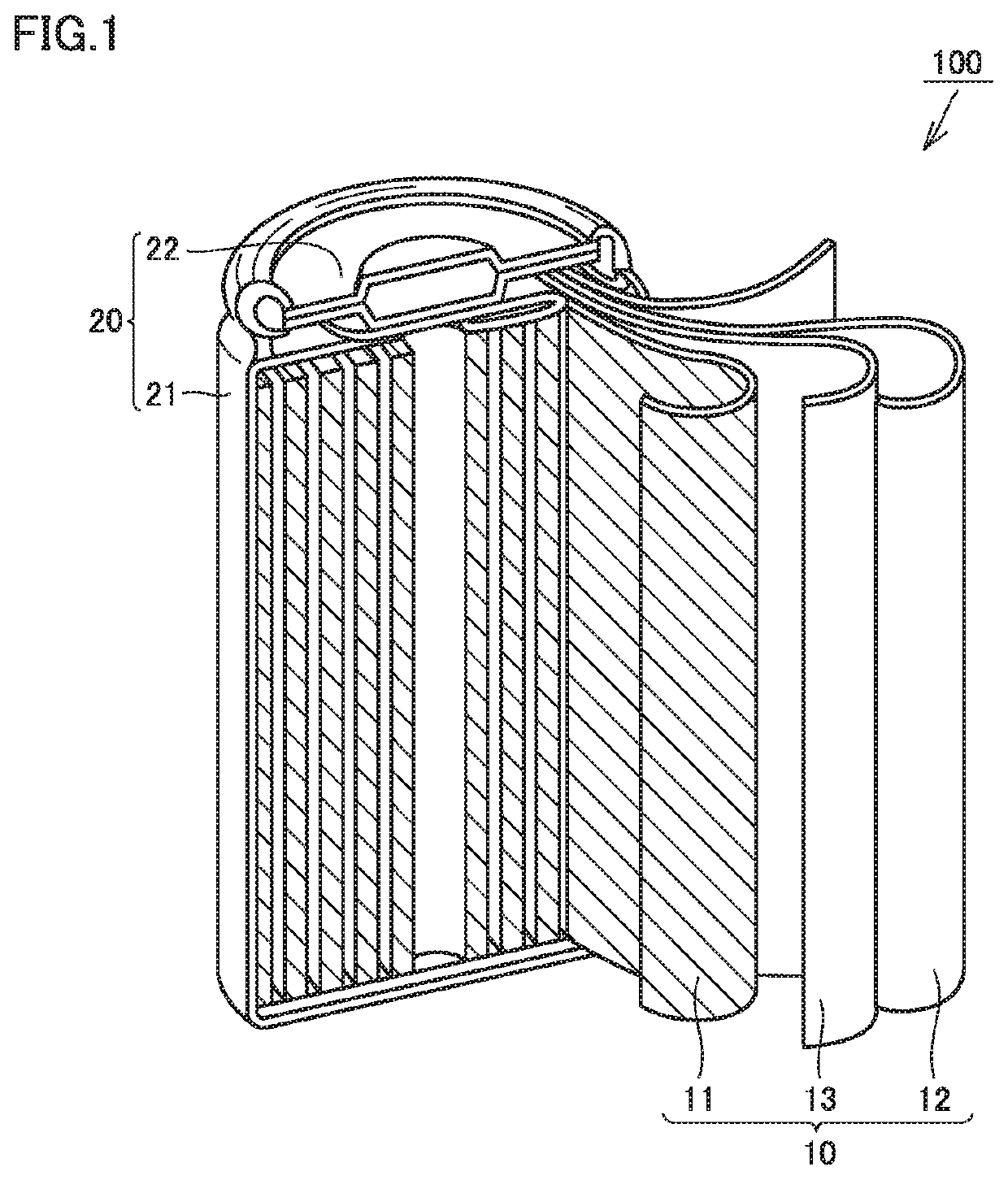Method of manufacturing non-aqueous electrolyte secondary battery
a technology of secondary batteries and electrolyte, which is applied in the manufacture of final products, cell components, electrochemical generators, etc., can solve the problems of low oxidation potential, low oxidation potential, and the positive electrode potential may exceed the oxidation potential of dme, so as to improve the low-temperature properties of batteries, reduce the melting point, and reduce the effect of oxidation potential
- Summary
- Abstract
- Description
- Claims
- Application Information
AI Technical Summary
Benefits of technology
Problems solved by technology
Method used
Image
Examples
example 1
[0125](A) Construction of Electrode Group
[0126]As a positive electrode active material, LiNi1 / 3Co1 / 3Mn1 / 3O2 was prepared. The positive electrode active material, acetylene black, PVdF, and NMP were mixed in a predetermined proportion to prepare a positive electrode composite material paste. The positive electrode composite material paste was coated on a surface of an Al foil and dried to form a positive electrode composite material layer. Thereby, a positive electrode was manufactured. The positive electrode was rolled and cut. Thereby, positive electrode 11, which was a strip-like sheet, was prepared.
[0127]As a negative electrode active material, composite particles were prepared. The composite particles each included spheroidized natural graphite and amorphous carbon. The amorphous carbon covered the surface of the spheroidized natural graphite. The composite particles, CMC. SBR, and water were mixed in a predetermined proportion to prepare a negative electrode composite material ...
examples 2 to 5
[0149]Each battery 100 was manufactured by the same manufacturing method as that in Example 1, except that the volume ratio among the components of the second solvent was changed as shown in Table 1 below.
examples 6 and 7
[0150]Each battery 100 was manufactured by the same manufacturing method as that in Example 1, except that the amount of BP in the first electrolyte solution was changed as shown in Table 1 below.
PUM
| Property | Measurement | Unit |
|---|---|---|
| voltage | aaaaa | aaaaa |
| volume % | aaaaa | aaaaa |
| volume % | aaaaa | aaaaa |
Abstract
Description
Claims
Application Information
 Login to View More
Login to View More - R&D
- Intellectual Property
- Life Sciences
- Materials
- Tech Scout
- Unparalleled Data Quality
- Higher Quality Content
- 60% Fewer Hallucinations
Browse by: Latest US Patents, China's latest patents, Technical Efficacy Thesaurus, Application Domain, Technology Topic, Popular Technical Reports.
© 2025 PatSnap. All rights reserved.Legal|Privacy policy|Modern Slavery Act Transparency Statement|Sitemap|About US| Contact US: help@patsnap.com


